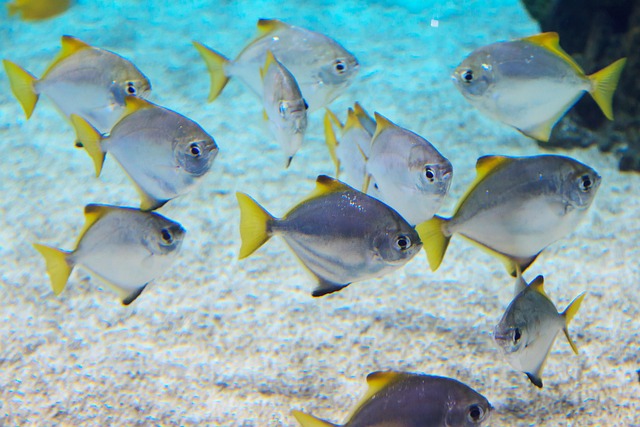Silverfish, attracted to damp, dark spaces and starch-rich materials, can be controlled through understanding their behavior and using effective residential silverfish treatment methods. While traditional approaches like visual inspections and pesticides are still used, modern strategies emphasize integrated pest management (IPM) with advanced technologies such as sensors, cameras, microencapsulation insecticides, and heat treatments. These innovations provide safer, more precise solutions for maintaining pest-free homes while minimizing environmental impact.
In the ever-evolving battle against pests, advanced technologies are transforming the way we detect and treat silverfish in residential spaces. This article delves into the intricate world of these tiny invaders, exploring their behavior and habitat. We dissect traditional methods and present a comprehensive overview of cutting-edge technologies for effective treatment. Learn how newer techniques offer tailored solutions, ensuring a peaceful home environment free from unwanted guests, focusing on innovative residential silverfish treatment options.
Understanding Silverfish: Behavior and Habitat in Residential Spaces
Silverfish are small, wingless insects that belong to the family Silverfish or Lepismidae. They are known for their peculiar behavior and preference for dark, damp places, making residential spaces like homes and apartments their ideal habitats. These creatures are particularly drawn to materials high in starch and cellulose, such as paper products, cardboard, fabrics, and even book bindings. In residential settings, they often lurk behind walls, under floors, within appliances, and in stored items, emerging at night to forage for food.
Understanding silverfish behavior is crucial for effective residential silverfish treatment. They are elusive and quick, making them hard to spot during the day. Their ability to survive for extended periods without food and their resistance to many common pesticides make traditional methods of control challenging. Knowing their preferred environments helps homeowners identify potential entry points and take proactive measures, such as sealing gaps around pipes and wires, maintaining low humidity levels, and storing items in sealed containers, which can significantly reduce silverfish populations and deter them from infesting homes.
Traditional Methods for Silverfish Detection and Control
Traditional methods for detecting and controlling silverfish in residential settings often involve a combination of visual inspections, sticky traps, and chemical pesticides. Homeowners or pest control professionals would physically inspect hard-to-reach areas like cracks, crevices, and behind appliances for live insects or signs of their presence, such as fecal spots. Sticky traps placed near potential entry points can capture passing silverfish, providing a visual indicator of their activity levels. Chemical treatments, typically in the form of sprays or baits, target both visible insects and eggs to disrupt their breeding cycles and reduce populations over time.
While effective, these traditional methods have limitations. They may not always detect hidden infestations early on, and chemical pesticides can be harmful to non-target organisms, including beneficial insects and pets. As a result, many modern approaches to residential silverfish treatment emphasize integrated pest management (IPM) strategies that combine multiple techniques for safer, more effective long-term control.
Advanced Technologies in Silverfish Treatment: A Comprehensive Overview
In recent years, advancements in technology have significantly enhanced the landscape of residential silverfish treatment. Traditional methods, once reliant on chemical pesticides, now coexist with innovative solutions that are more precise, environmentally friendly, and effective. One such breakthrough is the use of advanced sensors and monitoring systems that detect even minimal silverfish populations, allowing for early intervention before an infestation escalates. These technologies employ infrared and motion-activated cameras to identify insects, triggering targeted treatments that minimize damage to property and reduce chemical exposure.
Additionally, modern insecticides now incorporate microencapsulation technology, ensuring active ingredients are released slowly and precisely at the source of infection. This not only increases the longevity of treatment but also reduces the risk of resistance developing among silverfish populations. Furthermore, heat treatment methods utilize steam or hot air to eradicate insects, providing a chemical-free alternative that is particularly effective for hard-to-reach areas and sensitive environments. These advanced technologies offer comprehensive solutions for residential silverfish treatment, ensuring homes remain pest-free with minimal environmental impact.
Implementing Effective Residential Silverfish Treatment Using Newer Techniques
In recent years, the approach to residential silverfish treatment has evolved significantly with the advent of advanced technologies. Traditional methods, while effective, often relied on extensive pest control chemicals that could have adverse environmental and health impacts. Newer techniques leverage cutting-edge technology to detect and eliminate silverfish infestations more precisely and safely. For instance, heat treatment uses targeted temperatures to kill silverfish without damaging personal belongings or contaminating the environment. Similarly, specialized gel baits are being developed that attract and eliminate silverfish through a combination of food lure and insect growth regulator, offering a less toxic alternative.
Additionally, integrated pest management (IPM) strategies are gaining popularity due to their holistic nature. IPM combines biological control agents, habitat manipulation, and monitoring with minimal use of pesticides. This approach not only reduces the risk of chemical resistance but also promotes a more sustainable environment within homes. As these advanced technologies continue to refine residential silverfish treatment, homeowners now have access to safer, more effective solutions for maintaining pest-free living spaces.
In conclusion, advanced technologies offer a promising future for effective residential silverfish treatment. By understanding these pests’ behavior and habitat, we can implement targeted strategies using modern tools like AI-driven inspections, automated trap systems, and precise chemical applications. These innovations not only enhance detection accuracy but also promote more environmentally friendly control methods. Embracing these advancements allows us to tackle silverfish infestations proactively, ensuring a pest-free home environment for residents.
